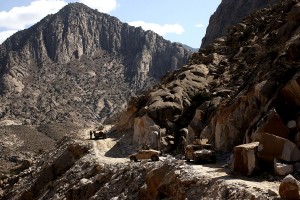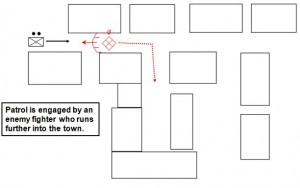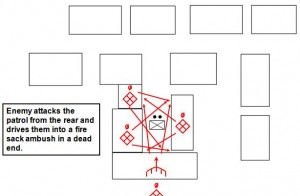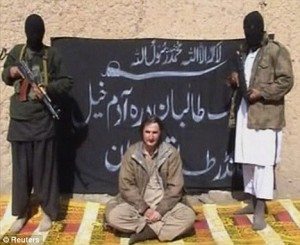In The British Approach to Counterinsurgency we weighed in on the British Kajaki dam project (for readers unfamiliar with this project visit the links provided). While brave and effective operations were necessary to deliver large turbines to the dam for electricity generation, we observed that this front in counterinsurgency was merely one, an important one also being that of focus on the enemy.
The point is that in order for infrastructure to work, the enemies of that infrastructure must be targeted. The dam won’t long operate if its operators are all killed, or if other replacement parts have to undergo such intensive operations in order to be deployed at the plant. Infrastructure is good, as is good governance. But for these softer tactics in counterinsurgency to be successful, the Taliban must be engaged and killed.
Soon after this “defense analysts” also weighed in with similar concerns.
… electricity supplies are likely to face disruption from Taliban attacks unless the region is cleared of militants, analysts said.
The area is not densely populated, so the power lines must cover many miles of hostile land to reach the remote villages that are due to be linked up to the dam. British troops in Helmand control an area of only a few miles radius beyond the Kajaki dam, so pylons and substations will have to cross what is now a stronghold for militants operating in the region.
“The power lines coming out of Kajaki are going to be extremely vulnerable to attack,” said Matthew Clements, Eurasia analyst at Jane’s Defence. “The arrival of the extra turbine is a major blow to the Taliban, so they are going to be keen to make sure the project fails.”
“In Iraq we’ve seen that overhead power lines are extremely difficult to protect, and there’s no point generating electricity if you can’t distribute it,” said Paul Smyth, head of operational studies at the Royal United Services Institute for Defence Studies.
The point about electricity is also similar to our observations on the grid in Iraq as well as irrigation and water supply systems. So whatever happened to the dam? Were our warnings prescient or merely an overreaction? More on the dam shortly.
Thematically similar operations are being waged in Afghanistan by the Texas National Guard.
Fifty-two Texas National Guard men and women are planning an attack on a Taliban stronghold near here that other Army units estimate would take thousands of U.S. and Afghan soldiers to capture.
The Texans plan to win the battle of Khajanoor Farms without firing a shot …
A Texas National Guard Agribusiness Development Team plans to defeat the Taliban’s hold on the big wheat-seed farm at Khajanoor by building a larger, quality seed farm in the high mountain plains of Ghazni province.
If approved – and if the climate at 10,000 feet can be mastered – the Nawur Farm could free Ghazni’s wheat farmers from Taliban-approved suppliers and lousy products imported from Pakistan.
“It could also save lives,” said Col. Stan Poe of Houston, commander of the Texas agribusiness team …
“For seven years, we’ve been chasing the Taliban. They literally just come back,” said Illinois National Guard Col. David Matakas. “We can go in and kill a lot of people and do no good. It’s more important that we push forward with training the Afghan forces and focus on turning a district, a tribe or a village away from the Taliban, one at a time” …
Khajanoor Farms is in the code-red Andar District. A large force of Taliban fighters controls the 2,500 acres of wheat fields and subsistence plots from caves in mountains overlooking the farm.
Khajanoor was built in 1975 as a government farm to supply wheat seeds to five provinces. There are 96 farm buildings on the site, two wells and a crude irrigation system. The farm’s flour mill is a shambles.
Satellite photos show sharecropper farmers are still cultivating wheat for seeds, but much of the farm is broken down.
U.S. forces say the seed produced at Khajanoor is sold under Taliban control to farmers loyal to the Taliban cause.
The Texans had visited wheat farms in the far north Nawur district, an area populated by descendants of Genghis Khan known as Hazaris. Some of the Hazari farms were at elevations of 10,000 feet. Trees were growing at elevations 1,500 feet higher than you’d find in North America or Europe.
The Ghazni provincial government owns vast tracts of land in Nawur.
There’s plenty of water stored in a vast snowmelt playa called Daste Nawur.
Martin and James thought this offered a way to defeat the Taliban at Khajanoor Farms. They designed a giant, 20,000-acre wheat seed farm north of Daste Nawur that could provide seeds for most of Afghanistan’s wheat farmers.
The Hazaris were eager to help the Texans and willing to learn how to run a large farm …
Lt. Col. Al Perez of San Antonio is the agribusiness team’s market specialist. He’s been in the military for 23 years, both in the regular Army and the Texas National Guard.
“This is way much better than pulling the trigger,” he said. “Way, way better.”
So the plan is to compete with the inefficient Taliban-sponsored operation and send the local population on its way to independence from the thugs.
It’s a nice idea, and along with better language training, The Captain’s Journal supports such tactics. We have applauded similar efforts by the Department of Agriculture. So the proof of our support for the nonkinetic part of counterinsurgency is on the books.
But there is a subtle although important problem with this account. Notice that kinetic operations and population-centric operations are placed in juxtaposition for purposes of contrast rather than complement. This is a far better way, says Lt. Col. Perez. Indeed it is, if it works without any focus on finding and killing the Taliban.
But the Taliban have proved resilient and adaptive. To assume that they can be beaten by developing better seed assumes that they won’t take over “protection” of the new production operation. Not so, for Taliban operations in both Afghanistan and Pakistan.
The Taliban have made a significant amount of money in operations ranging from taxation of various local businesses, to “protection” for larger industrial operations, to kidnapping and extortion of cell phone providers. With the Taliban unmolested in this region there is no assurance that they won’t strong-arm the operations for cash. Mere operation of businesses has not proven to be enough incentive yet for the population to revert to armed resistance against the Taliban.
As for the status of the Kajaki dam?
Afghan workers have kept the power station running throughout the past 30 years of war and upheaval, and even now have negotiated with the Taliban so they can travel to work from their villages …
The Taliban hold sway in the countryside around the dam and even charge people for electricity, so they can be persuaded to let the workers keep the power plant running, the workers said.
“We do not have a problem with anyone,” Mr. Rasoul said. “We tell them we are working and producing electricity for everyone in the villages and towns.”
In the case of the dam, it hasn’t exactly been a nail in the coffin of the insurgency. In fact, they are making money off of it. It’s advisable to see soft operations such as this agricultural expedition as part of a whole rather than an alternative to targeting the enemy. This was our argument in Center of Gravity Versus Lines of Effort in COIN.
The Texas National Guard deserves credit for innovative tactics in the counterinsurgency campaign. It is apparently a long term program and it will be self-evident if successful. But the program should not be seen as a replacement for other lines of effort, including targeting the enemy so that he doesn’t use his criminal enterprise to flip yet another soft counterinsurgency program to his favor.
Prior:
Financing the Taliban
Kidnapping: The Taliban’s New Source of Income
The U.S. Department of Agriculture Does COIN
The British Approach to Counterinsurgency
Defense Analysts Echo The Captain’s Journal Concerning Kajaki Dam
The Role of Electricity in State Stabilization
Targeting the Insurgency Versus Protecting the Infrastructure







